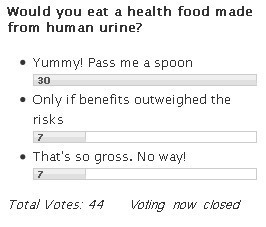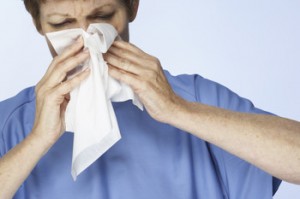
A friend of mine who worked in a biotech lab in Europe suffered a bout of what she thought was hayfever this year…snuffling and runny nose, itchy and sore eyes, the usual thing…except this was in February! She took a few days sick leave – it was that bad – and the symptoms subsided. Until she went back to work, where she started up again her earlier experiment – enzymatic chemical synthesis.
The devastating result was far worse than the snuffles she had suffered before his sick leave – her neck and face went bright scarlet, she started shaking and collapsed gasping for air. Anaphylactic shock was the diagnosis. She had to leave her job although the lab in question has implemented very strict protein-powder handling control systems, it’s the kind of accident that is almost impossible to predict and potentially more common than ever.
There are more unusual accidents. In December 1999, Emory University in Atlanta paid out $66,400 in fines and changed its procedures following the death two years earlier of primate researcher Elizabeth Griffin who contracted herpes B after being hit in the eye with fecal material, urine, or saliva while putting a rhesus monkey in a cage at the Yerkes Regional Primate Center.
A small-scale lab accident may involve someone mixing something and getting an unexpected exothermic or explosive reaction. The results often reach the community by word of mouth and through a note in the literature. For instance, Toshi Nagata of the Institute for Molecular Science, Okazaki, Japan, recently reported an accident while following a literature procedure published ten years ago. The chemical preparation involved synthesising a brominated bipyridine (Can. J. Chem. [69, 1117 (1991)] but instead of using standard quantities Nagata’s team had scaled it down to a tenth. While they were purifying the product, the 100 ml reaction flask exploded violently injuring one of the team in the arm. Nagata suspects that the problem lay in the formation of a peroxide by-product that would have been less concentrated on a larger scale. Nagata, wrote to Chemical & Engineering News, the flagship journal of the American Chemical Society, saying, “I do not intend to blame the authors for not describing the danger, but all chemists should be aware that this procedure could be dangerous.”
Guidelines and regulations are all well and good but what about insidious threats like this? Such incidents beggar the question of how might they be predicted. Should there be stricter guidelines for the way procedures are described in the literature? If so, what might they be and how would they be applied?
In 1995, a seemingly small-scale spill of hydrofluoric acid killed a technician in Australia. He died from multi-organ failure two weeks after the incident. Several factors contributed to his unfortunate death, according to the official report – he was alone, wearing only rubber gloves and sleeve protectors but nothing covering his lap, He was working in a crowded fume hood. The lab had no emergency shower, nor any calcium gluconate gel antidote available. The lessons may be obvious. But, accidents happen to even the most experienced of scientists.
The slow death that befell Dartmouth chemist Karen Wetterhahn when she was exposed to a few drops of the highly toxic dimethylmercury in August 1996 took several months to kill her. Although Wetterhahn was wearing latex gloves this compound rapidly penetrated them and was absorbed through her skin. Ironically, she was at the time using dimethylmercury to examine the effects of toxic metals, such as chromium, on human cells. While, in October this year, Michal Wilgocki of the University of Wroclaw in Poland, a chemistry professor of thirty years experience, died after an explosion in his laboratory. Fire-fighters have suggested the accident may have happened while Wilgocki was drying unstable perchlorates.
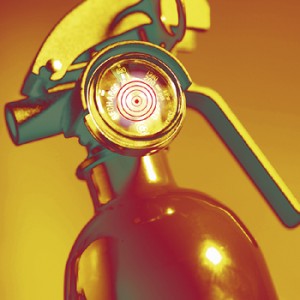
So, who ensures that rules and regulations are adhered to in order to prevent accidents? Who makes sure the fume-cupboards and filters are up to a high enough standard and the reagent bottles are stored safely?
According to Jim Kaufman of the Laboratory Safety Institute (LSI), “There are three levels of responsibility. First is Management. Safety is their responsibility. Preventing accidents and injuries is their responsibility. If you manage others, you are responsible for their health and safety. You have to enforce the rules,” he explains. “Second is the Chemical Hygiene Officer and the lab’s safety committee. They are advisors and recommenders. Third is everyone. Everyone needs to be responsible for health and safety. Follow the rules, report accidents, injuries, and unsafe conditions.”
Organizations such as LSI – formerly the Laboratory Safety Workshop a not-for-profit center providing a focus for safety in science education, work, and our everyday lives. The LSI makes several assumptions about the level of knowledge of those “in the know”, they say “You know the hazards, you know the worst things that could happen, you know what to do and how to do it if they should happen, you know and use the prudent practices, protective facilities, and protective equipment needed to minimize the risks.” But, when the pressure is on, there can always be a proverbial chance for inadvertent roller skating down the stairs to wreck the best of intentions.
With the ubiquity of the Internet, every lab now can have instant online access to its health and safety rules and guidelines. The Biological Safety Policy of Washington State University at Pullman is a typical example of the materials freely available. One aspect of safety that is often ignored is that while personal protective equipment (PPE), such as eye protection, lab coats and fume hoods are essential, there is an alternative and that is to better design an experiment so that the hazards are controlled without resorting to PPE. If safer materials or processes are available or the whole experiment can be enclosed then that reduces risks.
There are numerous career opportunities in the field of safety. And quite a few glamorously named positions available, many of which are fairly synonymous job description minutiae aside. There are process/equipment safety engineers and technicians, laboratory safety officers, environmental protection agents, industrial (and chemical) hygienists, environmental, safety and health specialists, occupational health specialists and many others.
Most of these positions require at least a Bachelor’s degree in a technical subject, usually chemistry, biology, engineering, or physics, and it is, of course, possible to graduate in Industrial Hygiene or the related Occupational Safety too. One important aspect of many of these positions is that they usually require that the jobholder can physically wear appropriate personal protective equipment (PPE) and be capable of functioning while wearing respiratory protection. Which precludes some applicants on medical grounds.
An experienced industrial hygienist might work within an institute’s Occupational and Environmental Safety Office, for instance, and be responsible for coordinating support for the various laboratories, and ensuring employees, students, visitors, (patients, if they are working in a hospital), and the surrounding environment are protected.
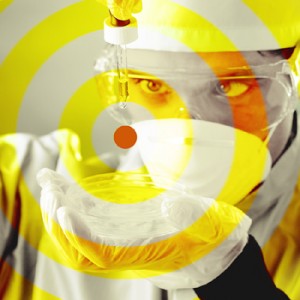
Jason Worden has just completed his first year as a Laboratory Safety Technician at the University of Idaho, and has enjoyed the experience so far. “I work at a University in the Environmental Health & Safety Office,” he says, “My job includes surveying/inspecting labs on campus and testing and maintaining safety equipment. Another part of my job includes Radiation Safety duties as well as responding to Hazardous Material Emergencies and general office duties.”
There are important differences between the various job descriptions though, for instance, a safety engineer deals with protection of people and property from injury and damage investigating incidents. Whereas an industrial hygienist may be looking at protecting people from more insidious threats, injuries and illnesses that come about because of exposure to chemical agents or materials that may not be such an obvious hazard as a boiling vat of solvent outside a fume hood.
Jay Jamali is Environmental Health & Safety Director at Enviro Safetech Incorporated, a San Jose based company http://www.nullenvirosafetech.com. So, what routes are there into safety? “I have a client that went from researcher to safety specialist in a biotech company,’ says Jamali. “In other cases the safety staff have no background in biotech.” He adds that the position of “safety officer” is usually dependent on size of an organization or institute. “Smaller organizations assign safety to multiple site personnel,” he explains, “some doing chemical hygiene plan, same radiation safety, some bloodborne pathogen safety, some laser safety, some doing the personal protective equipment and some the lab safety.” On the other hand, outside contractors, such as Enviro Safetech, can take on the entire safety support operation on an as needed basis.
Bill Paletski of the Pennsylvania Technical Assistance Program (PENNTAP) points out that “flexibility and diversification is your key to beginning a career and improving it in the field of safety.” He suggests that without, belittling education, “Degree after Degree will not help, getting your feet wet is a good start.”
Many countries have regional safety departments that also inspect laboratories while every university should have a safety officer or section. Companies are bound by law to ensure the safety of their staff and visitors to their labs. Pay with a government agency, such as OSHA or EPA, is generally not as high as with a permanent position within an organization but they do offer good experience and training, according to Jamali. On the whole though pay is usually commensurate with experience, degrees and initials.
“The work is very addictive,” Jamali enthuses, “and very few leave the field after they get in because it gets under your skin.” He adds, that, “The key to success is to be a generalist, specialize in one of the three [main] fields and be an expert in at least two topics in your specialty.”
There are many specific problems that have not previously been such a concern in lab safety. Bio and chemical terrorism. Post 9-11, safety issues have been brought into sharp relief. Although most institutions are carrying on essentially as normal, security will ultimately impact on working practices in laboratories around the world. According to a spokesperson for Cornell University, “We’re still discussing all of this at various levels and there aren’t any clear answers. The one place that’s definitely involved is the College of Veterinary Medicine, where research on anthrax has been ongoing for years.”
Merle Schuh is a chemist at a small college – Davidson in North Carolina. He reckons in terms of the safety of faculty and students, “We have not instituted any new security measures or management procedures as a result of the increased threat of terrorism. We have always been conscious of safety considerations and lab and building security, and our present activities and procedures are deemed adequate,” he told me. “Since we are a small college, most students and faculty recognize each other, and any strangers to the chemistry building and other science buildings during daylight hours would generally be noticed.”
Working down a mine or on the high-seas, one might anticipate a real sense of danger when applying for the job, it might even be one of the thrills of the chase, but perhaps with the exception of those delving into active volcanoes or deep beneath the waves most researchers do not actively seek out danger.
Instructors at colleges and universities have a duty to emphasize and teach safety to their students. Proper education leads to awareness of safety issues and self motivation for their personal safety and the protection of others. “By the time science students graduate,” says Schuh, “ideally their conscientiousness about safety issues should be as well developed as their skills in doing laboratory work.” These days, not even the smallest or most ill-equipped lab has an excuse for failing to do its best to keep its researchers safe. But, still, in real life there is no safety net.
A version of this feature article by David Bradley first appeared in his careers column on BioMedNet.
 I commented on a post on the Bad Language blog, produced by my good friend Matthew Stibbe, earlier this week. He was waxing lyrical about cutting power consumption in his SOHO and mentioned how he prefers to brew tea with freshly drawn water. I pointed out that while this may have benefits it would actually increase his kettle limescale problems through the addition of extra calcium and magnesium ions. The effect will be negligible, but if we are adding up every single kilowatt-second then it could make a difference. Of course, brewing tea is not environment friendly in the first place and we should all really be drinking trapped dew under a hessian bivouac, or somesuch.
I commented on a post on the Bad Language blog, produced by my good friend Matthew Stibbe, earlier this week. He was waxing lyrical about cutting power consumption in his SOHO and mentioned how he prefers to brew tea with freshly drawn water. I pointed out that while this may have benefits it would actually increase his kettle limescale problems through the addition of extra calcium and magnesium ions. The effect will be negligible, but if we are adding up every single kilowatt-second then it could make a difference. Of course, brewing tea is not environment friendly in the first place and we should all really be drinking trapped dew under a hessian bivouac, or somesuch.
 There have been 32 issues of my science news column on spectroscopynow.com since it was last officially called Spectral Lines, but I thought it was a nice name so occasionally resurrect it here when I highlight the latest research findings I cover on the site. It also gives me an excuse to re-use a logo I did in the early days of the site touting the line “David Bradley On Spec” (geddit?).
There have been 32 issues of my science news column on spectroscopynow.com since it was last officially called Spectral Lines, but I thought it was a nice name so occasionally resurrect it here when I highlight the latest research findings I cover on the site. It also gives me an excuse to re-use a logo I did in the early days of the site touting the line “David Bradley On Spec” (geddit?).





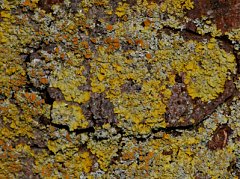
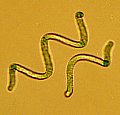 Urine is a problem. Huge volumes are flushed, with fresh water, into the world’s sewage systems and then enormous volumes of yet more water are used to treat the waste along with solids. However, writing in a forthcoming issue of the Inderscience publication, International Journal of Biotechnology (2008, 10, 45-54), fellow journalists can email me if they want an advance copy of the paper) researchers in China and Russia describe how microbes could be used to convert liquid urine into a phosphorus and nitrogen rich biomass for use as feed, fertilizer and fuel.
Urine is a problem. Huge volumes are flushed, with fresh water, into the world’s sewage systems and then enormous volumes of yet more water are used to treat the waste along with solids. However, writing in a forthcoming issue of the Inderscience publication, International Journal of Biotechnology (2008, 10, 45-54), fellow journalists can email me if they want an advance copy of the paper) researchers in China and Russia describe how microbes could be used to convert liquid urine into a phosphorus and nitrogen rich biomass for use as feed, fertilizer and fuel.